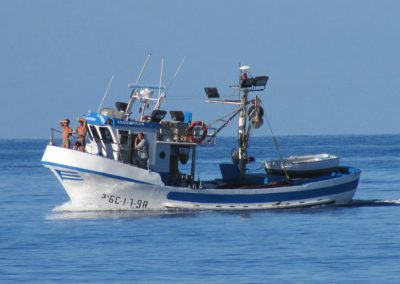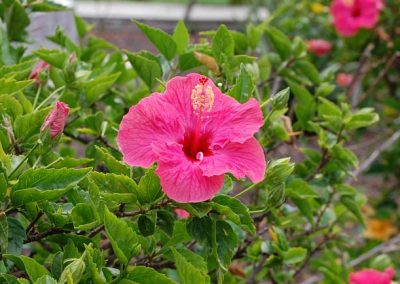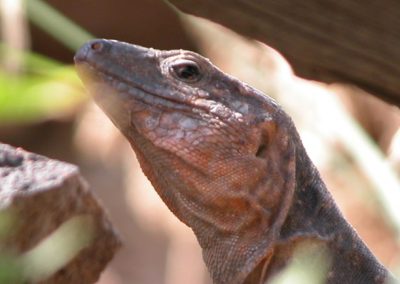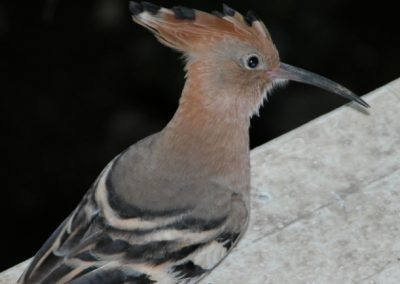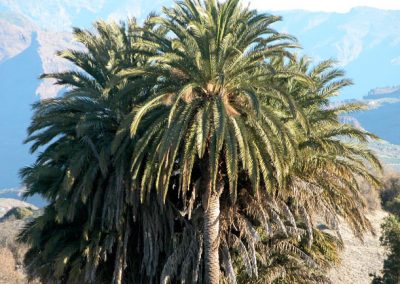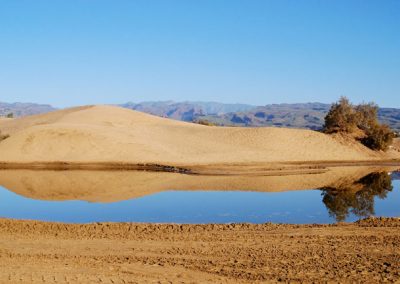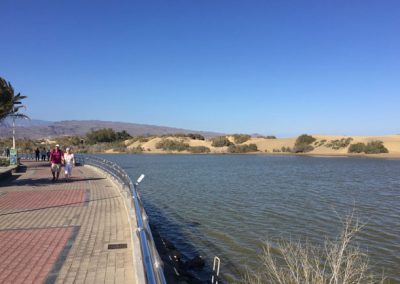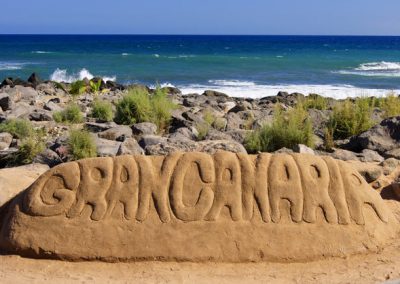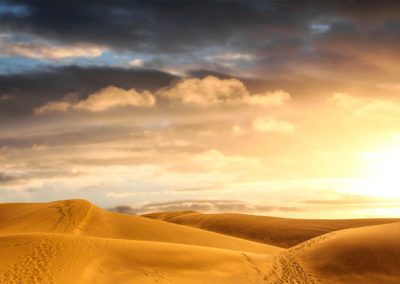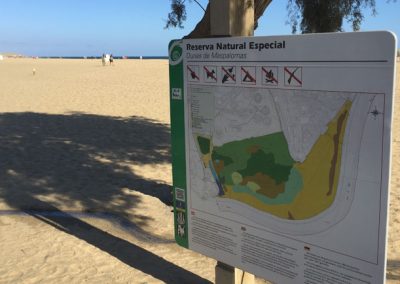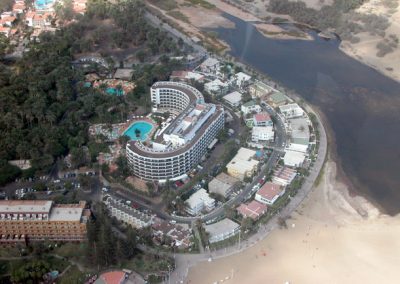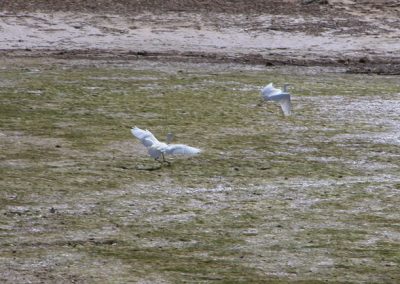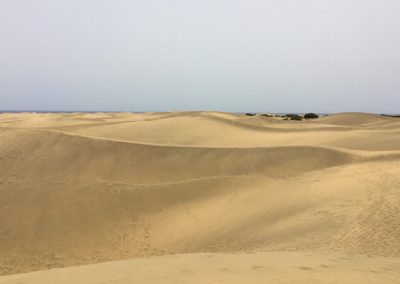MASPALOMAS DUNES NATURE RESERVE
By and large, two main ecosystems can be defined in the Maspalomas Dune field and the Maspalomas Pond.
The dune field
Today, the Maspalomas dune field is the only ecosystem of this type found in Gran Canaria. Within the field there are distinct environments differing mainly in sand mobility and vegetation.
The mobile dunes form a strip between Playa del Inglés, where they originate and the Maspalomas Pond. They are characterized by large masses of sand in constant movement due to the wind. Chains of transverse dunes that are interspersed with inter-dune depressions make up the mobile dunes.
The Pond of Maspalomas
Is a small coastal saltwater lagoon. It is the remains of the former salt marshes of Maspalomas destroyed by the housing projects built around it.
It is separated from the sea by a sand barrier that is broken when there is abundant rain. This allows water renewal and entry to fish and other marine life.
One of the main features of this ecosystem is its seasonal character, great variations in the water’s salinity, volume and the visiting bird community.
Around the pond are patches of aquatic vegetation such as reed fields and small woods of Canary Islands Tamarisk (Tamarix Canariensis), indispensable for the birds and invertebrates. They constitute an excellent refuge for the birds, both migratory and nesting.
The Arenicolus (Traganum moquinii) is a species found throughout Northeast Africa, Cape Verde and Canary Islands. It is typical of beach areas where it forms monospecific communities.
The Canary Islands Tamarisk (Tamarix canariensis) found in most parts of the dune field,is a small tree perfectly adapted to the difficult conditions of mobile dunes, and. It is resistant to water and edaphic salinity and sand burial.
One of the species best adapted to the dune dynamics is the Smooth Flatsedge (Cyperus laevigatus). Its main habitat is the depressions between the lines of transverse dunes.
The central and northern spaces have fixed dunes, which are covered by vegetation resulting from the lack of sand mobility. This environment has large stable dunes with sandy flats and inter-dune depressions.
The Aulaga (Launaea arborecens) is a thorny bush copious in the fixed dunes and capable of surviving in the mobile dunes. It is a xerophilic species resistant to scarcity of water.
The Salado (Schizogyne glaberrima) is an endemic species of the Island of Gran Canaria. Its bright yellow flowers produce a pleasant odor.
As its name suggests Canary Palm tree (Pheonix canariensis) is endemic to the Canaries. There are some samples within the dune area; such as in the inter-dune depressions where there is edaphic humidity.
The Sand Sedge (Cyperus capitatus) is a geophite characteristic of fixed dunes where it can form extensive fields.
Introduction
The dune fauna is located mainly in the areas of greatest vegetation therefore, it is most abundant in the fixed dunes rather than the mobile ones. The birds, being the largest group, are represented by species related to desert ecosystems (most of them extinct) and other species typical of bush areas.
The Hoopoe (Upupa epops)
Is a very showy breed due to the crest it has. This typical desert bird is abundant in the dunes. It feeds on the invertebrates it hunts invertebrates by burying its beak in the sand.
The giant lizard of Gran Canaria (Gallotia stehlini)
Is a reptile that can reach the length of 80 cm. This makes it the largest of lizards of the Canaries. It feeds off of plant products, although the young ones are insectivores. It is abundant in the dunes and in spite of its appearance, it is completely harmless.
The Maspalomas Pond:
The migratory birds, like the tourists that visit the beach of Maspalomas, find an excellent winter refuge, exempt of the rigours of the European climatic.
The Whimbrel (Numenius phaepus)
Is one of Maspalomas most loyal migratory birds. It characterized by the large curved beak it uses to catch aquatic invertebrates. It also hunts land invertebrates in the dune sands close to the pond.
The very white and elegant Little Egret (Egretta garzetta)
Is an expert fisher and invertebrate hunter, which they stalk for long periods of time. The egret uses it long beak to harpoon its prey.
Sanderling (Calidris alba)
This small sandpiper is one of the most abundant migratory birds of Maspalomas. Sometimes you can see bands of up to 100 specimens. It feeds off of the small invertebrates it catches on the muddy edges of the Pond.
One of the most spectacular birds that visit the Maspalomas Pond is the Grey Heron (Ardea cinerea). It is an expert fish predator catching them easily after stalking them for long periods of time.
Turnestone (Arenaria interpres)
This species, as its name suggests searches for food under the stones. It is more common on the beach than around the pond itself.
The birds that nest in the Pond are considerably fewer than the migratory birds. There are four nesting species of aquatic birds: Moorhen (Gallinula chloropus), Coot (Fulica atra), Little Ringed Plover (Charadrius dubius) and Kentish Plover (Charadrius alexandrinus).
In the past, before tourism development, there were other aquatic species living in the Pond, but have disappeared nowadays, such as the Marbled Teal (Marmaronetta angustistirostris).
The Moorhen (Gallinula chloropus)
Is the most abundant of the aquatic species in the Pond of Maspalomas. It feeds off of the aquatic vegetation.
Very similar to the previous species is the Coot (Fulica atra)
It differs from the previous species by its white beak, which contrasts with it black plumage. It feeds off of the aquatic vegetation. After being absent for nearly a century, in 2004, it has nested once again in the Pond.
The Kentish Plover (Charadrius alexandrinus)
Is one of the scarcest birds in Gran Canaria, due to the deterioration of its habitat, beaches and coastal puddles, by the housing projects. Maspalomas is one of its main refuges. It nests on the ground, hence the importance of being careful stepping around the Pond.




